FINA World Cup Underscores Big Changes Ahead for International Water Polo
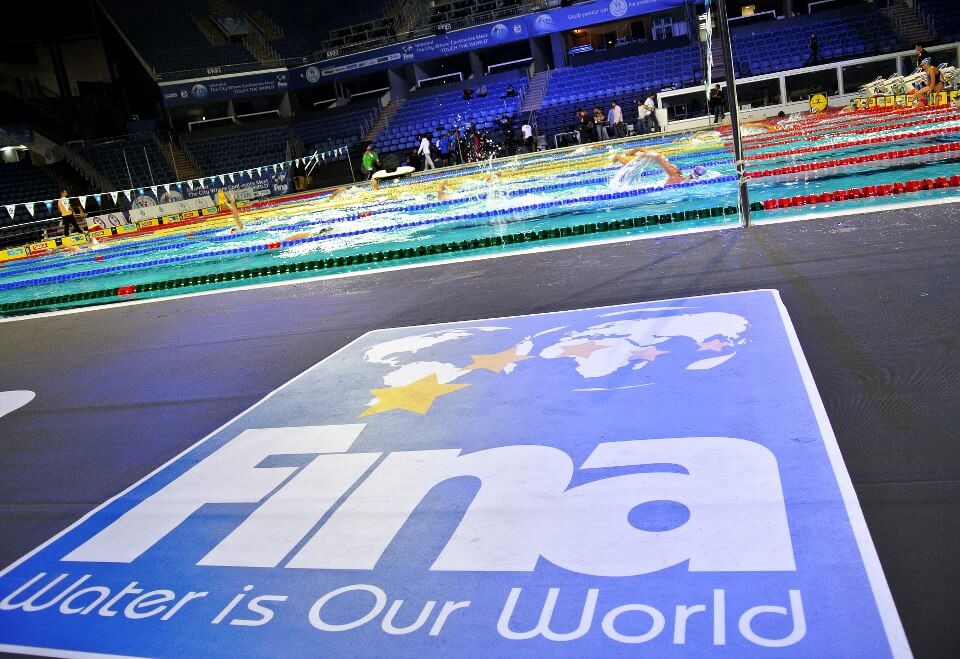
By Michael Randazzo, Swimming World Contributor
The recent FINA Men’s Water Polo World Cup 2018, held two weeks ago in Berlin, saw the much-anticipated introduction of rule changes, some minor, some radical, in matches involving players from senior national men’s teams.
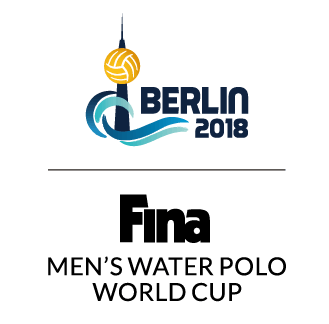
Applying the new rules in meaningful action for the first time proved to be a revelation. Given the experimental nature of this endeavor, there were numerous inconsistencies and a few hiccups, including plays inexplicably blown dead, goals disallowed and out of sync shot clocks. But there’s little doubt that time and experience will hone the newly implemented instruments into more precise guidelines for a safer, faster, more entertaining game.
But time is a luxury that FINA may not have. The race to transform polo is up against an unyielding deadline: the International Olympic Committee’s (IOC) demand that rosters be trimmed from 13 to 11 for the 2020 Olympics, less than two years away.
Coaches agree: no one wants reduced rosters.
Controversy around the roster cut sprang up immediately; coaches were uniformly opposed to the change when it was announced in June 2017. The Technical Water Polo Committee (TWPC), which regulates the sport for FINA, has had to deal with their difficult—and apparently implacable—opposition. With the exception of Serbia’s Dejan Savic and South Africa’s Paul Martin (who were not interviewed), none of the other head coaches assembled in Berlin expressed support for the looming roster cut, imposed in June 2017.
Croatia Head Coach Ivica Tucak, whose team reigns as current FINA world champions and earned silver at the 2016 Olympics, was emphatic in his opposition to the new player limits.
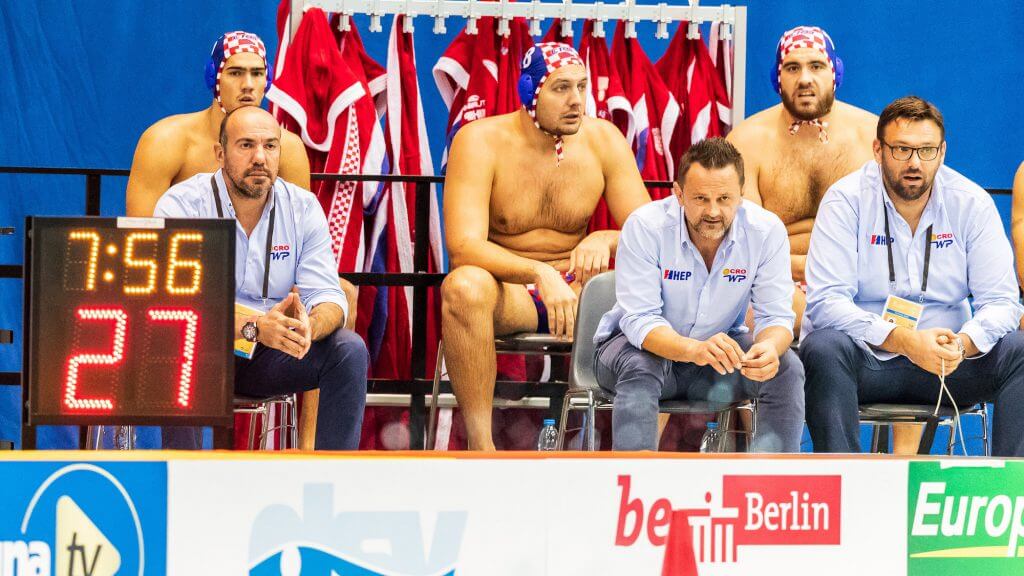
A glum-looking Tucak (far left) watches his team in Berlin. Photo Courtesy: Sportphoto.shop
“It will be terrible in the Olympic Games,” he said on the pool deck of the Europasportpark pool in Berlin. “Eleven players, in my opinion [it’s too] small. You cannot make preparation for the game because you must have two players more [so they’re] relaxed, [have] more concentration.”
The same sentiment was echoed by coaches from Australia, Germany, Hungary, Japan and the U.S.
In his comments, Alex Rodriguez, Assistant Coach for the U.S. Senior Men’s National Team, was succinct:
“It’s not something that anybody in water polo wants, and, [from] what I’ve heard, is dictated by the IOC. In what other sport are there less people on the bench than in the field?” He answered his own question with an emphatic “There aren’t!”
The sport in transition: will it work?
Water polo—birthed out of English rugby in the 1890s—has proved determinedly resistant to change. According to Andrey Kryukov, Bureau Liaison for the TWPC, the primary obstacle has been a rulebook that many accuse of being overly subjective, based on whoever is doing the interpretation.
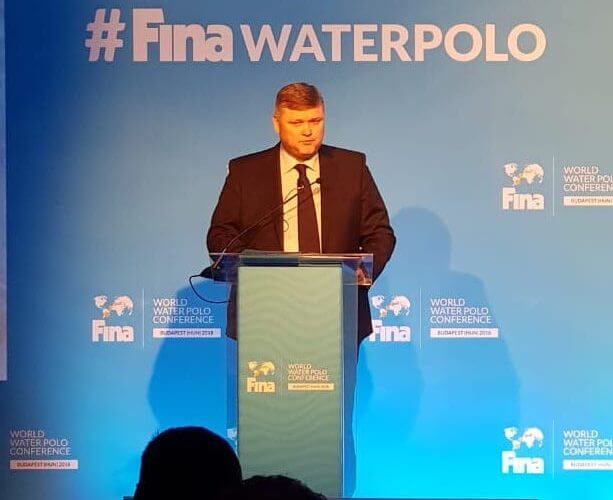
Andrey Kryukov. Photo Courtesy: FINA
“[W]e have to understand: the sport was created and the rules were written 127 years ago for great big boys who like to play rugby in the water,” Kryukov said in a recent interview. “Now the sport is played on TV and by 15 year old girls. That means the rules have to be adjusted.”
Addressing the IOC’s warning to water polo—and all Olympic sports—he said: “If you are not compliant with 21st century requirements, your sport will lose attractiveness.”
Given this reality, as well as long-simmering concerns about the sport’s direction, FINA held a conference last May in Budapest that brought together key-stakeholders, including coaches, players, referees and FINA decision-makers. The roster reduction was just one part of a larger rethinking of the game on the part of the Committee, which has resulted in the initiation of 18 rule modifications. Some rules are new, some have been amended; all are intended to point polo in a new direction for the 21st Century.
Kryukov viewed the Berlin experiment with reduced rosters and amended rules as a great success. In his opinion, the two finalists—Hungary, which won, and Australia, in its first-ever World Cup final—are representative of how effective these new rules can be.
“Hungary adapted very well,” he said. “You see in the first game they play old game, [but] they understood: under such rules, old game will not provide any advantage. Only they have to use the new rules, which they quickly adopted, and now they’re in the final.”
It’s not certain this is a reasonable conclusion. The evidence that Kryukov posits is that Hungary won because it significantly altered its play from an opening day loss to Germany, when they had four players whistled for game misconducts. From there on in, the Hungarians went on a tear, beating everyone, including Serbia in the semifinals because—in Kryukov’s view—they adjusted to the new rules, lessening their physical play and protecting a reduced roster.
Hungarian Head Coach Tamas Marcz didn’t exactly see it this way.
“The first game also for the delegates, for the referees was a new thing—new rules,” he said after his team had beaten Australia 10-4 in the Cup final. “It was very hard and very important for Germany’s [team].
“We were improving a lot in the games—that’s all,” Marcz added. “Everybody tried to be comfortable with these new rules. We found a way how to play in this tournament and we were getting better in each match.”
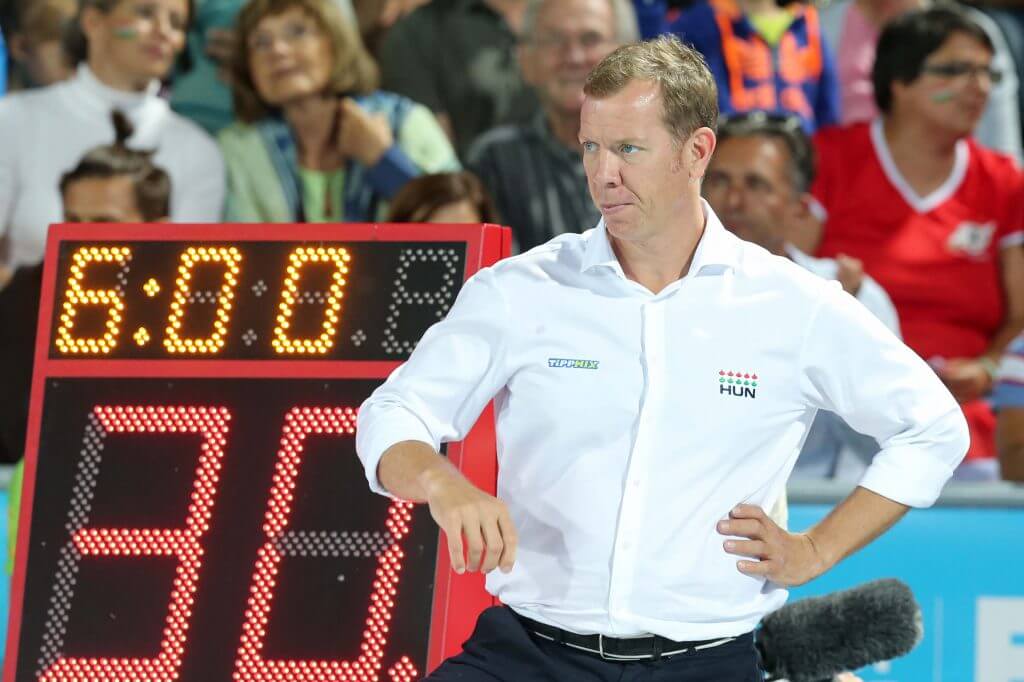
Hungary’s Tamas Marcz. Photo Courtesy: SIPA USA
The jury is out
This is not to say that the new rules—despite inconsistent application in Berlin—won’t work. In fact, what was noteworthy was how quickly senior national team players absorbed the possibilities offered by the changes. In one match, Germany scored a goal of a free throw from the corner, one of the prime changes to play in and around the goal. In their semifinal loss to Hungary, trailing by a goal with eight seconds remaining, the Serbians unleashed goalie Dimitrije Risticevic for a final shot. He missed, but the fact that a goalie was permitted to roam beyond mid-pool made for an exciting finish to a competitive match.
The new shot clock rule—where teams get 20 seconds on subsequent shot possessions, including an exclusion or a goalie save—is an excellent development. It limits what Kryukov called “boring time,” the extra 10 seconds of possession that reduces the number of shots. In fact, the altered clock and the emphasis of offense was what he cited as the tournament’s biggest success.
“The biggest effect of [the new rules]—nobody expected in the beginning when we applied…but it’s very good—that players on attack take the decision to shoot five, six seconds earlier because there’s no time,” he explained. “This means that every 15–20 seconds [there’s] a shot. Now we have 60–70 shots per game…. Shot is the result of an attack, and this is what people are looking for.”

Germany’s Moritz Schenkel—2018 World Cup most valuable goalie—and FINA’s Erik Van Heijningen. Photo Courtesy: Sportphoto.shop
One surprising outcome at Berlin was that neither Croatia nor Serbia—who have been extremely successful at the “old”, or Yugoslavian, game for almost two decades—made a major international final for the first time since the 2008 Olympics, when Hungary and the U.S. played for gold.
A big challenge in Berlin was explaining to spectators what’s happening during the game, including the new rules’ impact. This is something that will take time, but there’s an important precedent; according to Erik Van Heijningen, a FINA Bureau member from the Netherlands, organizers of the 2012 European Championships in Eindhoven hired a “presenter” to inform spectators what was happening in the pool.
“It is [important] to explain and to entertain,” he said in Berlin. In a nod to just how critical these changes are for both the sport and FINA, Van Heijningen added, “This is really a major effort, and it’s a personal investment for all these people here,” gesturing to Kryukov and TWPC members Mark Koganov and Ken Kuroda.
“Sometimes you know you are going to win the game,” he added. “And this is the moment.”
Actually, time will tell if this game is won or if the clock runs out before FINA and Kryukov make meaningful and consistent changes. If not, 2020 might mark the end of water polo—the Games’ oldest team sport—as an Olympic event.




.png)
The reduction of Olympic Water Polo rosters was the result of a deal that was struck between the IOC and FINA in order to add more swimming events, add 2 more women;s teams (it should have been 4 teams to equal the 12 men’s teams) and add sports like 3 on a side basketball. This shows no respect for our sport by the IOC, nor from FINA. Swimming is much more important to both the IOC and FINA. This reduction of rosters shows that water polo is on the bubble in terms of maintaining our status as an Olympic sport. No other Olympic team sport, except perhaps soccer, has fewer women’s teams than men’s teams; and doesn’t have equal number of substitutes for the number of players on the starting lineup. This makes it imperative that we make our sport more dynamic and more attractive to other countries by changing the playing rules. The new rules used at the World Cup have not really changed the game much at all. Shooting the ball quicker on extra-man because of a 20-second shot clock doesn’t really change the way the game is being played. The “real” changes to the game should come after the 2020 Olympics.
Coach:
Thank you for your insightful comments; I agree that water polo—which apparently has seen a precipitous dip in status from previous Olympics—has drawn unwanted scrutiny from the International Olympic Committee (partially b/c of the increased number of teams on the women’s side). Given your long-standing involvement w/American polo, I assume this is not a surprise to you. In fact, when I spoke recently with former Navy coach Mike Schofield, who I’m sure you know well, he lamented a lack of vision at the leadership level of American polo (NCAA / national team / etc.) – a concern that might be applied to FINA as well (I don’t know FINA well enough to have an opinion about this).
I thought that Andrey Kryukov’s comment: “If you are not compliant with 21st century requirements your sport will lose attractiveness” was quite telling in regards to the IOC. Again, I’m not saying anything you don’t already know; in fact, the concept of making the sport “more dynamic and attractive” was also what Mr. Kryukov said repeatedly to me. This concern certainly could be applied universally (i.e. to the NCAAs – by some measures the biggest water polo “league” in the world). There are thousands of athletes playing polo in America—the largest concentration in the world—so it seems logical for change to occur on this side of the Atlantic (BTW, I believe that’s happening; I’ll have more on what I find in subsequent articles).
As to the timing and impact of change, my impression is: this simply cannot wait. As you point out, the biggest current change is about Olympic rosters (I agree there’s little sense in this) BUT I disagree that there’s no real change otherwise. In fact, the biggest transformation will be how referees officiate the games (an age-old question, as you know); I would say the bigger issue is: will the coaches—who ENTIRELY have the power to adapt to a rules change—allow for this revolution?
If not, it won’t matter what is discussed AFTER the 2020 Games; by then, the fate of polo will have been sealed, likely for the worse.
Your correspondent